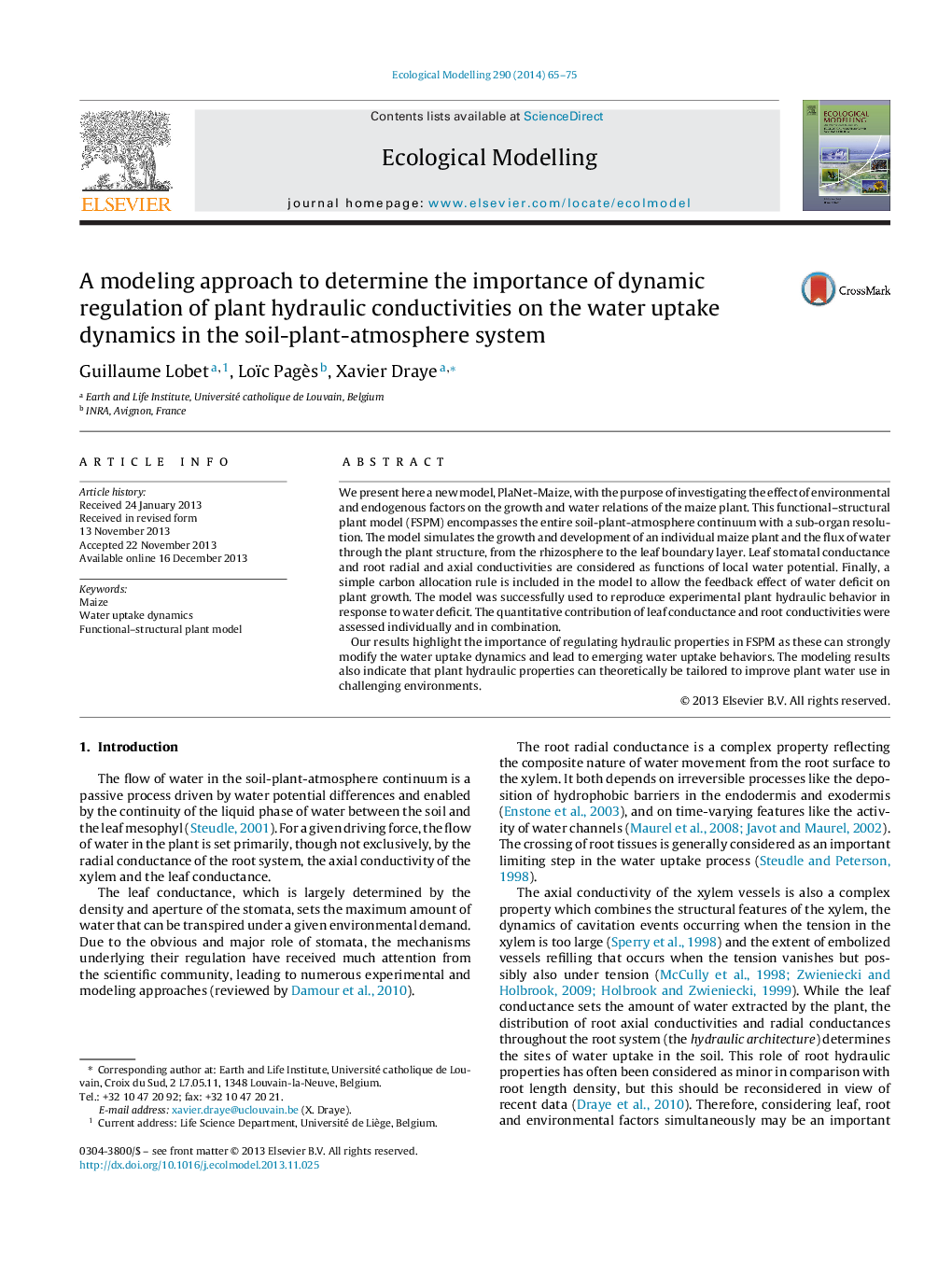| Article ID | Journal | Published Year | Pages | File Type |
|---|---|---|---|---|
| 4375843 | Ecological Modelling | 2014 | 11 Pages |
•We model water flow in a whole maize plant down to the organ level.•Dynamic water regulation sites (in the roots and leaves) were included into the model.•Influences of the different regulation sites were assessed individually.•Different water management practices were simulated.
We present here a new model, PlaNet-Maize, with the purpose of investigating the effect of environmental and endogenous factors on the growth and water relations of the maize plant. This functional–structural plant model (FSPM) encompasses the entire soil-plant-atmosphere continuum with a sub-organ resolution. The model simulates the growth and development of an individual maize plant and the flux of water through the plant structure, from the rhizosphere to the leaf boundary layer. Leaf stomatal conductance and root radial and axial conductivities are considered as functions of local water potential. Finally, a simple carbon allocation rule is included in the model to allow the feedback effect of water deficit on plant growth. The model was successfully used to reproduce experimental plant hydraulic behavior in response to water deficit. The quantitative contribution of leaf conductance and root conductivities were assessed individually and in combination.Our results highlight the importance of regulating hydraulic properties in FSPM as these can strongly modify the water uptake dynamics and lead to emerging water uptake behaviors. The modeling results also indicate that plant hydraulic properties can theoretically be tailored to improve plant water use in challenging environments.
